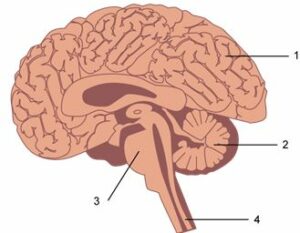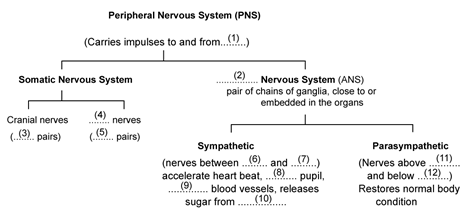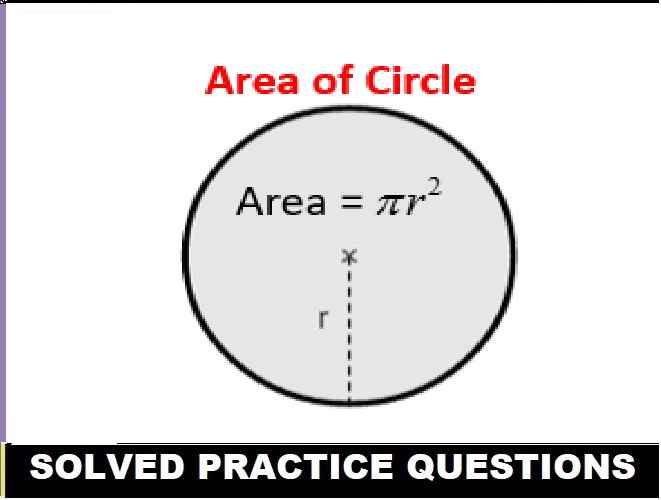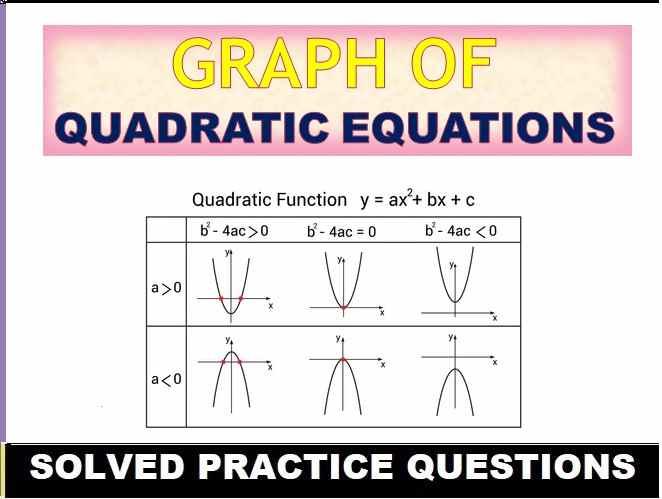Nervous System ICSE Class-10 Concise Selina Biology Solutions Chapter-10. We Provide Step by Step Answer of Progress Check , MCQs, Very Short Answer Type, Short Answer Type, Descriptive Answer Type Questions and Structured / Applications / Skill Type Questions of Exercise-10 Nervous System ICSE Class-10 . Visit official Website CISCE for detail information about ICSE Board Class-10.
| Board | ICSE |
| Publications | Selina Publishers PVT LTD |
| Subject | Concise Biology |
| Class | 10th |
| writer | HS Vishnoi |
| Chapter-10 | Nervous System |
| Topics | Solutions of MCQs, Very Short ,Descriptive and Structural/Skill Questions and Progress check |
| Edition | 2021-2022 |
Nervous System ICSE Class-10 Concise Selina Biology
-: Select Topics :-
E. Structured / Application / Skill Type
A . MULTIPLE CHOICE TYPE
Selina Biology Solution Chapter 10 Nervous System ICSE Class-10
Page 135
Question 1
The insulating sheath covering the axon is called
(a) Plasmalemma
(b) Neurolemma
(c) Dura mater
(d) Pia mater
Answer 1
(b) neurolemma
Question 2
Which one of the following pairs of brain part and its function is not correctly matched?
(a) Cerebrum – memory
(b) Cerebellum – balance of body
(c) Medulla oblongata – controls activities of internal organs
(d) Pons – consciousness
Answer 2
(d) Pons – consciousness
Question 3
A mixed nerve is one which
(a) Carries sensation from 2 or more different sense organs
(b) Contains both sensory and motor fibres
(c) Has a common root but branches into two or more nerves to different organs
(d) Has two or more roots from different parts of brain
Answer 3
(b) Contains both sensory and motor fibres
Question 4
Reflex action is controlled by the
(a) brain
(b) spinal cord
(c) autonomic
(d) peripheral nervous system
Answer 4
(b) spinal cord
Question 5
Which one of the following is responsible for controlling the body temperature?
(a) Liver
(b) Lung
(c) Hypothalamus
(d) Spinal cord
Answer 5
(c) Hypothalamus
Question 6
Which of the following is absent in a neuron?
(a) Ribosome
(b) Centrosome
(c) Chromosome
(d) Lysosome
Answer 6
(b) Centrosome
Question 7
The basic structural and functional unit of brain is
(a) Nephron
(b) Nerve
(c) Spinal cord
(d) Neuron
Answer 7
(d) Neuron
B. VERY SHORT ANSWER TYPE
Concise Selina ICSE Class-10 Biology Solution Nervous System
Page 135-136
Question 1
Name the following:
(a) The fluid that is present inside and outside the brain.
(b) The junction between two nerve cells.
(c) The part of the brain which is concerned with memory.
(d) The central space of the brain.
Answer 1
(a) Cerebrospinal fluid
(b) Synapse
(c) Cerebrum
(d) Ventricle
Question 2
Note the relationship between the first two words and suggest the suitable word/words for the fourth place.
(a) Stimulus : Receptor : : Impulse : _________
(b) Cerebrum : Diencephalon : : Cerebellum : _______
(c) Receptor : Sensory nerve : : Motor nerve : _______
(d) Axons : Nerve :: Cytons : _________
(e) Cerebrum : Corpus callosum : : Cerebellum : _________
Answer 2
(a) Stimulus: Receptor:: Impulse: Effectors
(b) Cerebrum: Diencephalon:: Cerebellum: Medulla oblongata
(c) Receptor: Sensory nerve:: Motor nerve: Effector
(d) Axons : Nerve : : Cytons : Nerve cells
(e) Cerebrum : Corpus callosum : : Cerebellum : Pons
Question 3
Complete the following statements by choosing the correct alternative from the choices given in brackets :
(a) The dorsal root ganglion of the spinal cord contains cell bodies of (motor/ sensory/ intermediate) neurons.
(b) Cerebellum is the part of the brain which is responsible for
(i) Conducting reflexes in the body
(ii) Maintaining posture and equilibrium
(iii) Controlling thinking, memory and reasoning.
Answer 3
(a) Sensory
(b) Maintaining posture and equilibrium
(c) Spinal cord
C. SHORT ANSWER TYPE
ICSE Class-10 Concise Selina Biology Solution Nervous System
Page 136
Question 1
Mention, where in human body are the following located and state their main functions:
(a) Corpus callosum
(b) Central canal
Answer 1
(a) Corpus Callosum – It is located located in the forebrain. It connects two cerebral hemispheres and transfers information from one hemisphere to other.
(b) Central canal – It is located in centre of the spinal cord. It is in continuation with the cavities of the brain. It is filled with cerebrospinal fluid and acts as shock proof cushion. In addition, it also helps in exchange of materials with neurons.
Question 2
State whether the following statements are true (T) or false (F).
(a) The main component of the white matter of the brain is perikaryon. (T/F)
(b) The arachnoid layer fits closely inside the pia mater. (T/F)
(c) A double chain of ganglia, one on each side of the nerve cord belongs to the spinal cord. (T/F)
(d) Dura mater is the outermost layer of the meninges. (T/F)
Answer 2
(a) False
(b) False
(c) True
(d) True
Question 3
State whether the following are simple reflexes, conditioned reflexes or neither of the two.
(i) Sneezing……………
(ii) Blushing…………..
(iii) Contraction of eye pupil……………
(iv) Lifting up a book……………
(v) Knitting without looking…………..
(vi) Sudden application of brakes of the cycle on sighting an obstacle in front ……………..
Answer 3
(i) Sneezing Simple
(ii) Blushing Simple
(iii) Contraction of eye pupil Simple
(iv) Lifting up a book Conditioned
(v) Knitting without looking Conditioned
(vi) Sudden application of brakes of the cycle on sighting an obstacle in front Conditioned.
Question 4
State the functions of the following:
(a) Association neuron
(b) Myelin sheath
(c) Medullary sheath
(d) Cerebrospinal fluid
Answer 4
(a) Association neuron : It acts as a connecting neuron and interconnects the sensory and motor neurons.
(b) Myelin sheath : It acts like an insulation and prevents mixing of impulses in the adjacent axons.
(c) Medullary sheath : It provides insulation and prevents mixing of impulses in the adjacent axons.
(d) Cerebrospinal fluid : It acts like a cushion and protects the brain from shocks.
Question 5
Rearrange the following in correct sequence pertaining to what is given within brackets at the end.
(a) Effector — sensory neuron — receptor — motor neuron — stimulus — central nervous system — response (Reflex arc)
(b) Repolarization — depolarization — resting (polarized) (during conduction of nerve impulse through a nerve fibre)
(c) Axon endings — nucleus — dendrites — axon —perikaryon — dendron (neuron structure)
(d) Diencephalon — cerebellum — medulla oblongata — pons — cerebrum — mid brain (sequence of parts of human brain)
Answer 5
(a) Stimulus — receptor — sensory neuron — central nervous system — motor neuron — effector — response
(b) Resting — depolarization — repolarization
(c) Dendrites — Dendron — perikaryon — nucleus — axon — axon endings
(d) Cerebrum — diencephalon — mid-brain — cerebellum — pons — medulla oblongata
Question 6
Name the following:
(a) Three types of neurons
(b) Three types of nerves
(c) Three main parts of the neuron
(d) Two major divisions of the nervous system
(e) Three layers of the meninges
(f) Three main parts of the brain
(g) Two parts of the autonomic nervous system
(h) Two types of reflexes
Answer 6
(a) Three types of neurons :
- Sensory neurons
- Motor neurons
- Association neurons
(b) Three types of nerves :
- Sensory nerves
- Motor nerves
- Mixed nerves
(c) Three main parts of the neuron :
- Cyton
- Dendrites
- Axon
(d) Two major divisions of the nervous system :
- Central nervous system
- Peripheral nervous system
(e) Three layers of the meninges :
- Dura mater
- Arachnoid
- Pia mater
(f) Three main parts of the brain :
- Cerebrum
- Cerebellum
- Medulla oblongata
(g) Two parts of the autonomic nervous system :
- Sympathetic nervous system
- Parasympathetic nervous system
(h) Two types of reflexes :
- Natural (inborn) reflex
- Conditioned (acquired) reflex
Question 7
Write the full forms of the following abbreviations:
(a) CSF
(b) CNS
(c) PNS
(d) ANS
Answer 7
(a) CSF: Cerebrospinal fluid
(b) CNS: Central Nervous System
(c) PNS: Peripheral Nervous System
(d) ANS: Autonomic Nervous System
D. DESCRIPTIVE ANSWER TYPE QUESTION
Solution of Selina Concise Biology for ICSE Class-10 Chapter-10 Nervous System
Page 136-137
Question 1
Define the following terms :
(a) Neuron
(b) Nerve
(c) Stimulus
(d) Synaptic cleft
(e) Reflex action
(f) Corpus callosum
Answer 1
(a) Neuron : Neurons are the fundamental units of the nervous system specialized to transmit information in the form of electrical impulses to different parts of the body.
(b) Nerve : Nerve is a bundle of nerve fibres (axons) of separate neurons, enclosed in a tubular sheath.
(c) Stimulus : An agent or the sudden change of the external or internal environment that results in a change in an organism or any of its body parts is called a stimulus.
(d) Synaptic cleft : The gaps between the axon terminals and the dendrites of another one or more neurons are called synaptic clefts.
(e) Reflex action : Reflex action is an automatic or quick or immediate involuntary action in the body brought about by a stimulus.
(f) Corpus callosum : Corpus callosum is a sheet of fibres connecting the two cerebral hemispheres.
Question 2
Distinguish between the following pairs :
(a) Cerebrum and cerebellum (function)
(b) Sympathetic nervous system and parasympathetic nervous system (location and role)
(c) Sensory nerve and motor nerve (direction of impulse carried)
(d) Cerebrum and spinal cord (arrangement of cytons and axons of neurons)
(e) Cranial nerves and spinal nerves (number in pairs)
(f) Nerve impulse and flow of electricity (transmission and speed)
(g) Medulla oblongata and cerebellum (function)
Answer 2
(a) Differences between cerebrum and cerebellum (function) :
| Cerebrum | Cerebellum |
| The cerebrum controls all voluntary actions. It enables us to think, reason, plan and memorize. | The cerebellum on the other hand maintains balance of the body and coordinates muscular activity. |
(b) Differences between sympathetic nervous system and parasympathetic nervous system (location and role) :
| Sympathetic Nervous
System |
Parasympathetic Nervous System |
| Sympathetic nervous system is located between the neck and the waist region. | Parasympathetic nervous system is located in the head and neck region and in sacral region. |
| It prepares the body for violent action against the abnormal condition. | It is concerned with re-establishing normal conditions after the violent act is over. |
(c) Differences between sensory nerve and motor nerve (direction of impulse carried) :
| Sensory Nerve | Motor Nerve |
| Sensory nerve brings impulses from the receptors i.e. sense organs to the brain or spinal cord. | Motor nerve carries impulse from the brain or spinal cord to effector organs such as muscles or glands. |
(d) Differences between cerebrum and spinal cord (arrangement of cytons and axons of neurons) :
| Cerebrum | Spinal Cord |
| The grey matter containing cytons lies in the cortex (outer region) while the white matter containing axons lies in the medullary region (inner region). | The grey matter containing cytons lies in the medullary region i.e. inner side while the white matter containing axons lies in the cortex i.e. the outer region. |
(e) Differences between cranial nerves and spinal nerves (number in pairs) :
| Cranial Nerves | Spinal Nerves |
| There are 12 pairs of cranial nerves. | There are 31 pairs of spinal nerves. |
(f) Differences between nerve impulse and flow of electricity (transmission and speed) :
| Nerve impulse | Flow of electricity |
| Here, neither any substance nor any electrons or ions move along the nerve fibre. | Here, electrons actually move along the wire. |
| Nerve impulses travel at a speed of about 100 metres per second. | Electricity is conducted at a speed of about 150,000 km per second. |
(g) Differences between medulla oblongata and cerebellum (function) :
| Medulla Oblongata | Cerebellum |
| Medulla oblongata controls the activities of internal organs and many other involuntary actions | The cerebellum maintains balance of the body and coordinates muscular activity. |
Question 3
While watching a scary movie, mention the effects on the following organs by the autonomous nervous system, in the table given below: (one has been done for you as an example).
| Organ | Sympathetic System | Parasympathetic System |
| e.g. Lungs | Dilates bronchi and bronchioles | Constricts bronchi and bronchioles |
| 1. Heart | ||
| 2. Pupil of the eye | ||
| 3. Salivary gland |
Answer 3
| Organ | Sympathetic System | Parasympathetic System |
| e.g. Lungs | Dilates bronchi and bronchioles | Constricts bronchi and bronchioles |
| 1. Heart | Accelerates heartbeat | Retards heartbeat |
| 2. Pupil of the eye | Dilates | Constricts |
| 3. Salivary gland | Inhibits the secretion of saliva causing the drying of the mouth | Stimulates the release of saliva |
Question 4
Give reason :
(a) The brain and the spinal cord are referred to as the central nervous system.
(b) Neurotransmitters are broken down by an enzyme just after passing an impulse from one neuron to the other.
Answer 4
(a) The brain and the spinal cord lie in the skull and the vertebral column respectively. They have an important role to play because all bodily activities are controlled by them. A stimulus from any part of the body is always carried to the brain or spinal cord for the correct response. A response to a stimulus is also generated in the central nervous system.
(b) Neurotransmitters are broken down by an enzyme just after passing an impulse from one neuron to the other to make the synapse ready for the next transmission of impulse.
Question 5
What are the advantages of having a nervous system?
Answer 5
The advantages of having a nervous system are as follows :
(a) Enables us to remember, think and reason out.
(b) Regulates involuntary activities such as breathing, beating of the heart without our thinking about them.
(c) Keeps us informed about the outside world through sense organs.
(d) Controls and harmonizes all voluntary muscular activities such as running, holding, writing
Question 6
Draw a labelled diagram of a Myelinated Neuron
Answer 6

Myelinated Neuron
Question 7
What is the difference between reflex action and voluntary action?
Answer 7
Reflex actions are involuntary actions which occur unknowingly. Voluntary actions on the other hand are performed consciously.
Picking up an apple and eating it is an example of voluntary action whereas withdrawal of hand on touching a hot object is an example of reflex action.
| Reflex Action | Voluntary Action |
| Reflex actions are involuntary actions which occur unknowingly. | Voluntary actions on the other hand are performed consciously. |
| Commands originate in the spinal cord, autonomic nervous system and a few in the brain as well. | Commands originate in the brain. |
E. STRUCTURED / APPLICATION / SKILL TYPE
The Nervous System Chapter-10 Selina Solution of ICSE Class-10 Biology
Question 1
Two hungry boys (A and B) enter a restaurant and see the menu.
Boy B starts salivating but not A. Explain the reason for this difference.
Answer 1
Salivation is an example of conditioned reflex that develops due to experience or learning. Saliva starts pouring when you chew or eat food. Therefore, this reflex will occur not just on the sight or smell of food. The brain actually needs to remember the taste of food. Boy B started salivating because he must have tasted that food prior unlike boy A.
Question 2
The diagram alongside shows a section of the human brain and its associated parts. Answer the questions that follow:
(a) Name the parts labelled 1, 2, 3 and 4.
(b) Name the protective membranous covering of the brain. Also mention its three layers.
(c) Name the basic unit of the brain.
(d) Write the important role of the part mentioned as 2.

Answer 2
(a) 1 – Cerebrum, 2 – Cerebellum, 3 – Pons, 4 – Medulla oblongata.
(b) Meninges. The three layers of meninges are dura mater, arachnoid and pia mater.
(c) Neuron/nerve cell.
(d) Cerebellum (part 2) coordinates muscular activity and balance of the body.
Question 3
Given below are a few situations. What effective change will occur in the organ/body part mentioned and which part (sympathetic or parasympathetic) of the autonomic nervous system brings it about?
| Situation | Organ/body part | Change/action | Part of autonomic nervous system involved |
| 1. You have entered a dark room | Eye | ||
| 2. Your body is consuming lot of glucose while running a race | Liver | ||
| 3. You are chewing a tasty food | Salivary gland | ||
| 4. You are running a race | Adrenal gland | ||
| 5. You are retiring to bed for sleep | Heart | ||
| 6. You are shivering in intense cold | Body hairs |
Answer 3
| Situation | Organ/body part | Change/action | Part of autonomic nervous system involved |
| 1. You have entered a dark room | Eye | Pupil dilates | Sympathetic |
| 2. Your body is consuming lot of glucose while running a race | Liver | Glycogen is converted into glucose in liver | Sympathetic |
| 3. You are chewing a tasty food | Salivary gland | Salivation increases | Parasympathetic |
| 4. You are running a race | Adrenal gland | Release of adrenaline and noradrenaline increases | Sympathetic |
| 5. You are retiring to bed for sleep | Heart | Heart rate slows down | Parasympathetic |
| 6. You are shivering in intense cold | Body hairs | Hair raised | Sympathetic |
Question 4
Given below is the partially incomplete scheme of the components of peripheral nervous system. Fill up the blanks numbered (1)- (12):

Answer 4
Fill in the following information in the diagram.
- Central Nervous System
- Autonomic
- 12
- Spinal
- 31
- Neck
- Waist
- dilates
- constricts
- liver
- neck
- sacral
Return to Concise Selina ICSE Biology Class-10
Thanks


